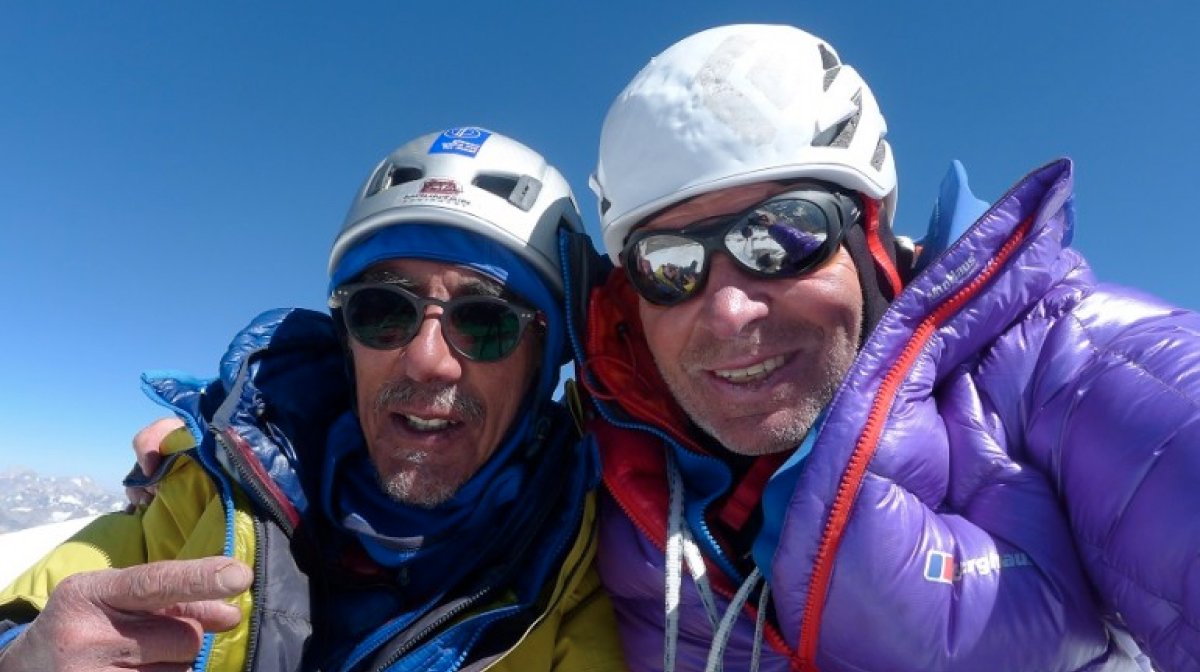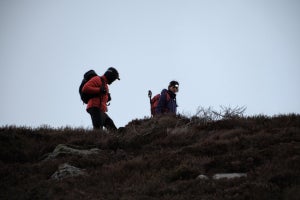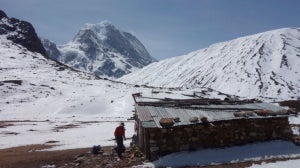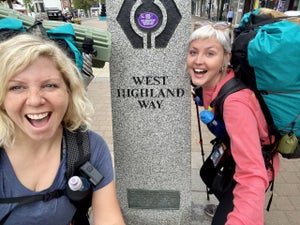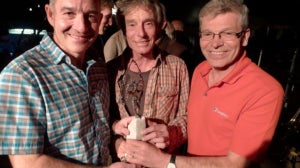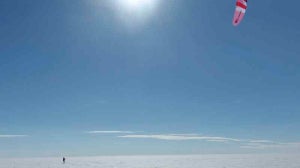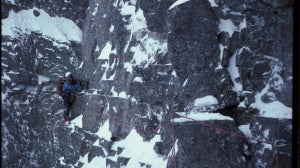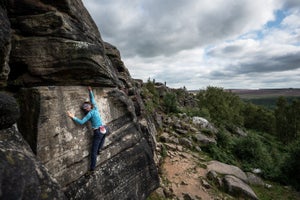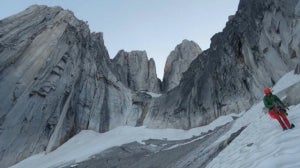
The liquid in our water bottle was most definitely not the refreshing water that I had expected.
Up until this point I had been snoozing contentedly in our little tent at 5,200m sucking in as much thin air as possible ahead of our attempt on the unclimbed north face of Sersank (c6,050m) in the Pangi Valley area of the Indian Himalaya.
As I fumbled around to melt water to wash my mouth out and ignore the unappetising taste of Victor’s urine I noticed that the stars were out. This at least was a positive. It had been snowing non-stop for several hours but now an improvement in the weather looked to be on the cards and that would greatly ease access to our planned climb.
It was the British mountaineer Martin Moran who prompted our interest in Sersank. He led a trek across the Sersank La in 2011 and wrote that the north side presented a ‘tremendous north face of linked white spiders.’ Victor and I knew Martin well enough to read between the lines. We contacted him confirmed our suspicions and found our 2016 objective.
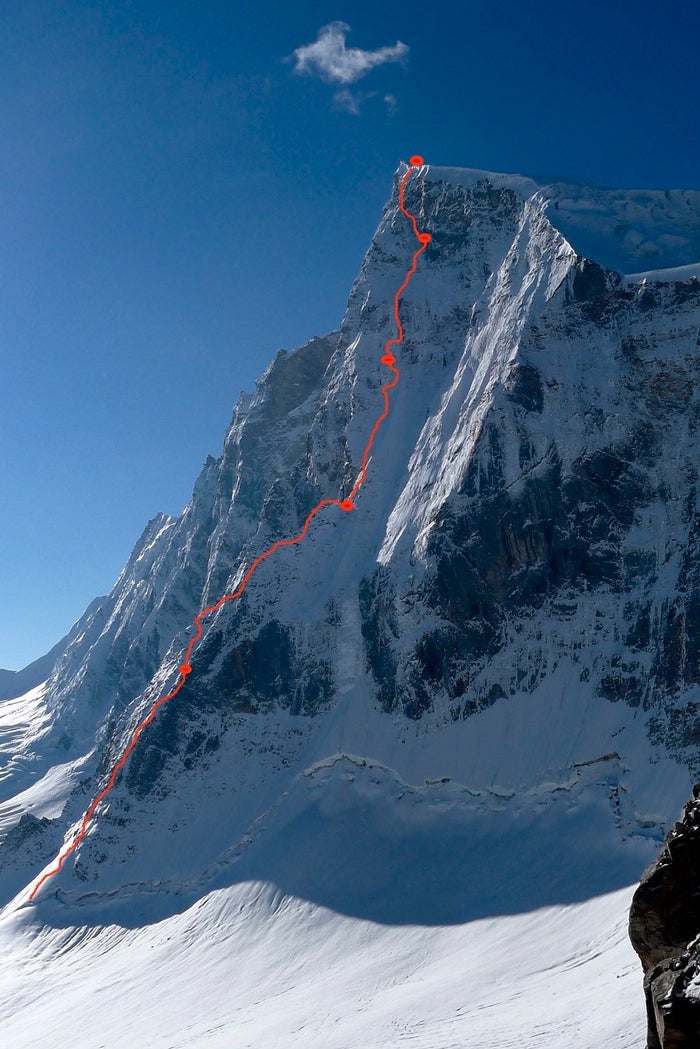
Vic and I had not climbed together since we did the Golden Pillar of Spantik in Pakistan in 1987. Over the intervening 29 years we had a boxing match in a seedy East London pub and intermittently kept in touch but essentially we went our separate ways; Victor became a mountain guide based in Chamonix and I stayed with my tax office job in England. And then, in 2015, a joint selection of our memoirs was published in France, a literary award was won and talk of a fresh trip together was born. And so it ended up that Vic and I, at 66 and 60, were back together in the mountains – 29 years after our Spantik experience.
Himalayan trips have changed a lot in 29 years. Back in the 1980s we freighted gas cartridges, spent hours in customs sheds, negotiated with porters and generally did everything ourselves. Now though gas cartridges can be bought in India, bigger baggage allowances to Delhi mean there is no need to freight kit and a plethora of in-country agents means that mountaineers can lay back and let others take the strain. We embraced the new world. Simplicity is all.
With logistics all arranged through Kaushal, our ever reliable agent in Manali, our first job was a quick drop in to the Indian Mountaineering Foundation in Delhi. Here we met Sanju, our Liaison Officer, and were subject to a mandatory briefing exercise. Mainly this involved officials staring intently at Victor and asking if we had a satellite phone. (Victor having been arrested and fined for using one a couple of years ago.) Denials complete an air conditioned 16 hour Volvo bus ride to the honeymoon town of Manali followed. Here we met Kaushal and Devraj our cook before boarding a mean vehicle called a Force Traveller for crossing the Rhotang Pass into the heart of the Himalaya.
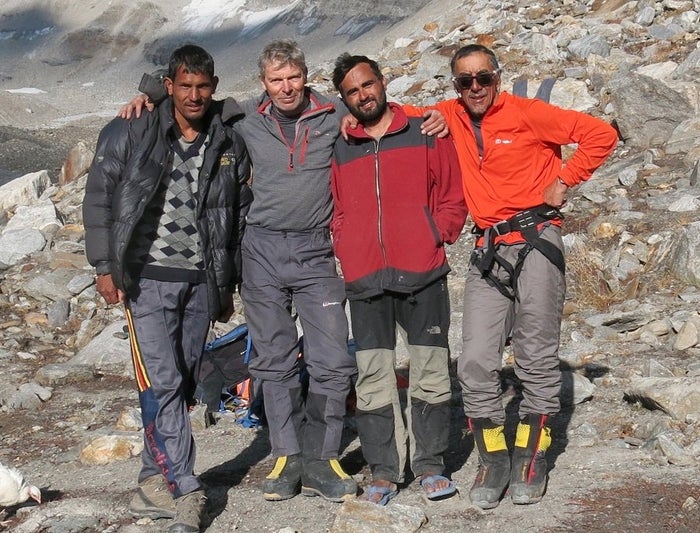
The Rhotang Pass is just under 4,000m and enjoying a ‘snow experience’ on the pass has become outrageously popular for Indian tourists. Even out of season the traffic queues were memorable. In spring Sanju told us that there is now a restriction of 800 taxis per day ferrying people to the snowline but before this limit was introduced the numbers reached 5,000 – 6,000 per day. Judging by the congestion with a lot less than 800 we could hardly imagine what 5,000 – 6,000 per day would look like.
The roadsigns on Indian Himalayan roads never cease to amuse me. As we zig zagged up the pass we passed signs urging us to ‘Keep Nerves on Sharp Curves’ and pointing out that ‘Safety on Road (leads to) Safe Tea at Home.’ On the far side of the Rhotang the atmosphere changes abruptly. A sign saying ‘last fuel for 365km’ sums up the new remote feel. Downstream from here in, the Chenab gorge, the tarmac runs out and the road deteriorates fast. It took 12 hours or so from Manali before we turned away from the Chenab river into the Sural valley where, in line with so many of the valleys hereabouts, the road head has now been extended to the last village, Sural Butori.
From here mules were hired (and never turned up) porters were engaged and after a halting two days of slow walk and negotiation base camp was established in sight of the Sersank La pass and at an altitude of about 4,400m.
And then, after a day of rest and sorting, two days of getting us and our heavy sacks up the energy sapping screes to the col and a further day of descending the far side and traversing to a high vantage point, Victor and I were able to lie in the tent staring at the face we had come to climb and enjoy a robust discussion about differentiating between our pee bottle and our water bottle.
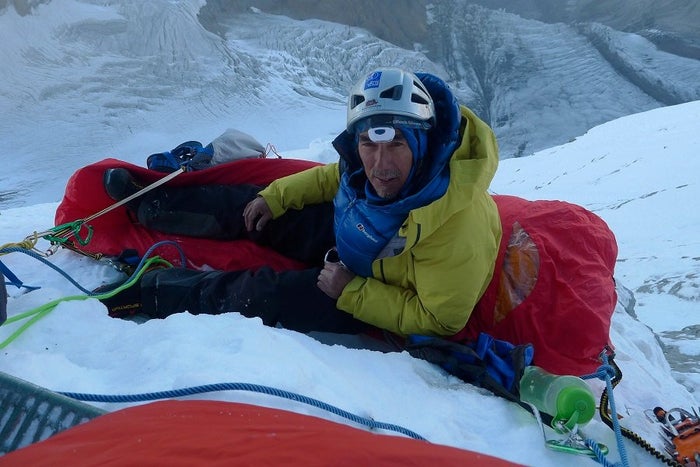
Our initial plan of accessing the face via a very steep chute was soon dismissed as too exposed to anything falling down the face. But like minds spied a single safe line accessing the face via a buttress to the left. It would add a few hundred metres to the climbing and no doubt increase the time we would spend on the climb but the fact that we both homed in on it was refreshing. Like minded thinking in the mountains is important and we had both wondered whether we would still felt the same way after 29 years apart. Our personalities have always been very different but by the time we were settled into our acclimatisation routine the banter was flowing as freely as it did in the 80s (albeit with old man subject matter) and our mountain judgement looked as if it was in tune too. Already we were agreeing that it was great to be back in the mountains together.
Photographs gleaned from the internet suggested that the face can be very dry and dangerous in the summer and it was a relief to see that it appeared quiet and well frozen for us. It did though look distressingly steep.
Albeit with some trepidation we couldn’t wait to get going. First though we had to re-cross the Sersank La, drop down to base camp, sort ourselves out, fill our stomachs and then re-cross the Sersank La to the foot of the face. I could see that I was going to be quite weary of the steep screes of the pass by the time we had finished.
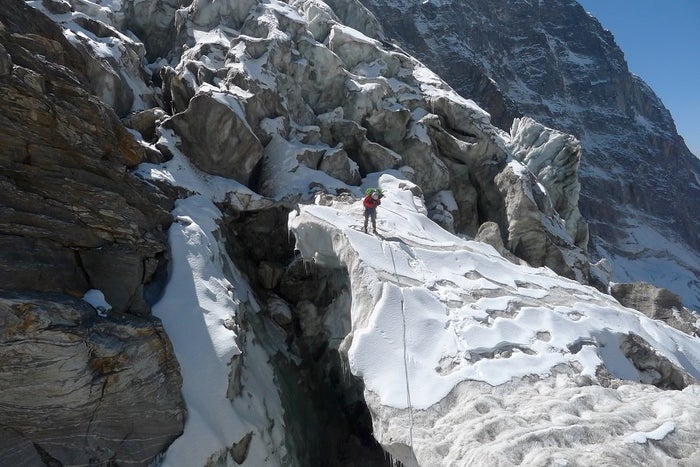
Four days later we had crossed the pass for the third time and were at the base of the buttress. Already I was being reminded of Victor’s wiry strength and enviable ability to plod through deep snow and carry huge loads at great speed. I had hoped that my fell racing efforts might have levelled us out in this respect but that appeared not to be the case.
The buttress was steep with powdery snow stuck to all but the very steepest rock. What looked to be straightforward from a distance was terribly precarious and painfully slow involving clearing perhaps 15cm of snow, hooking crampon points over rugosities in the rock and teetering upwards. It was not until early on our second day that the ground changed as we reached the knife edge crest of the buttress. The pitch that Victor led to get us to this point was a heroic performance that left me in no doubt that years of commercial expeditions have not dented the Saunders ability.
The way forward now was to traverse the sharp crest which sported intermittent overhanging walls on either side. It wasn’t the kind of ground that led itself to abseiling and if we should fail higher on the face it was clear that our descent would involve reversing these pitches followed by climbing back over the Sersank La. I very much hoped we were good enough to get up.
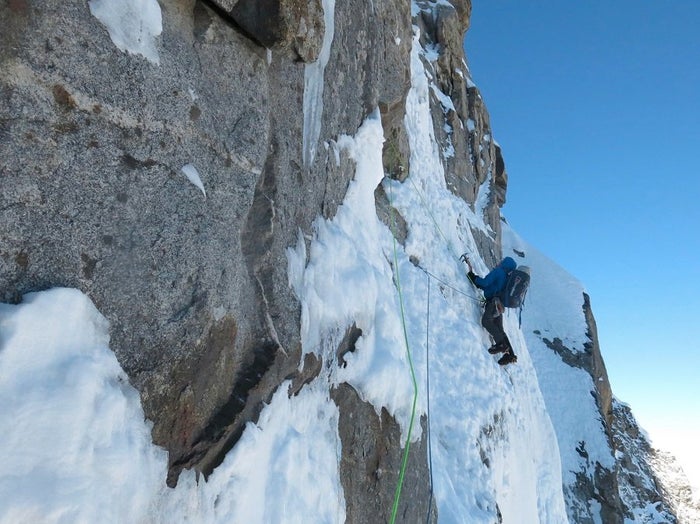
‘My stomach is not feeling too good’
It was at the end of our second day on the face that this problem first became apparent. By the end of day 3, as we were being buffeted by spindrift in our precariously positioned tent, it was clear that it had worsened.
‘Got to get out’ came urgently from the far end.
Being of slight build and with minimal blubber Victor likes to wear a lot of clothes both in his sleeping bag and whilst climbing. We were testing various items of Berghaus clothing and Victor was wearing them all together. This meant that he was wearing five layers and a harness. Sadly there was not enough time
‘Agh! Agh! Agh! Oh no! Oh no!’ came from above my head as he scrabbled for the door.
A full assessment revealed that Vic’s favourite Calvin Klein pants had taken the brunt of the force.
‘What shall I do?’ he asked no-one in particular. What with all the other layers, his harness and the need to be tied on at all times, simply taking them off was not easily possible.
‘Cut them off’ I announced unhelpfully being keen to both stem the flow of spindrift into the tent and generally see a quick resolution to the odorous problem that was playing out above my head.
‘Great idea’ said Vic producing an Opinel knife of the kind that I thought were only used for peeling vegetables.
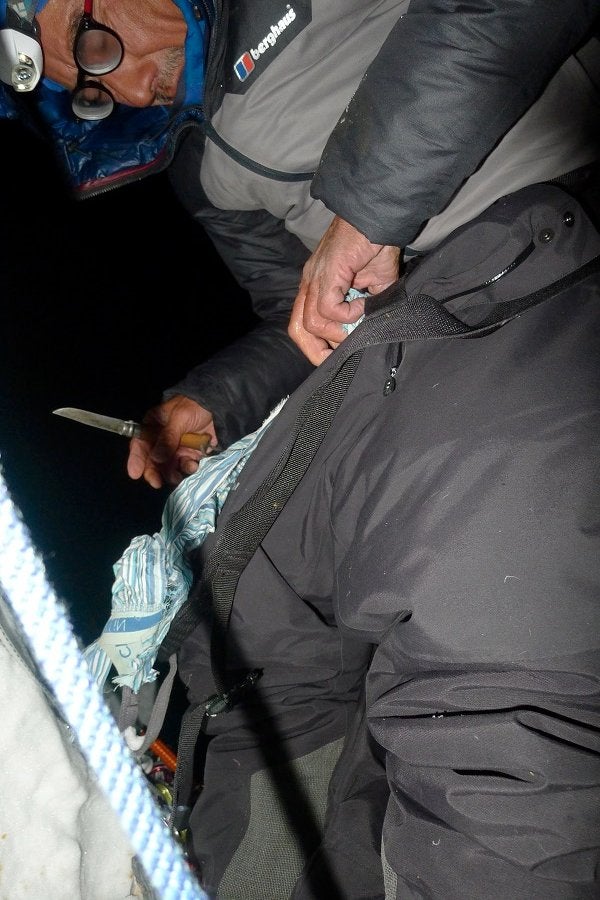
For the rest of the night we lay with our own thoughts. The accumulation of spindrift was pushing the tent off the ledge but Vic’s predicament was a more serious problem for us both. Four days out from base camp and three days into the face it was not the best position to have this kind of difficulty.
Come the morning there was no improvement but Victor was irrepressibly positive.
‘Looks brilliant ahead’ he enthused – ‘but can you lead the first pitch while I get myself sorted out’.
One of the great things about Himalayan north faces is that the temperature is always below freezing. The accident of the previous night was well frozen but ropes in particular had suffered and I did not envy Vic as he fought to feed them through his belay plate.
He was right that the climbing was becoming brilliant. The conditions on this upper part of the face were much better than lower down. It felt as if every pitch looked uncertain to begin with but turned out to be just about within our limits. The ice was a bit soft which meant our ice screws were less secure than we would have liked but progress was slow and steady. On this difficult ground it was interesting to note that I readily recognized Victor’s distinctive way of moving from 29 years before. He too commented that he instantly recalled my habit of resting my head against the slope when tired.
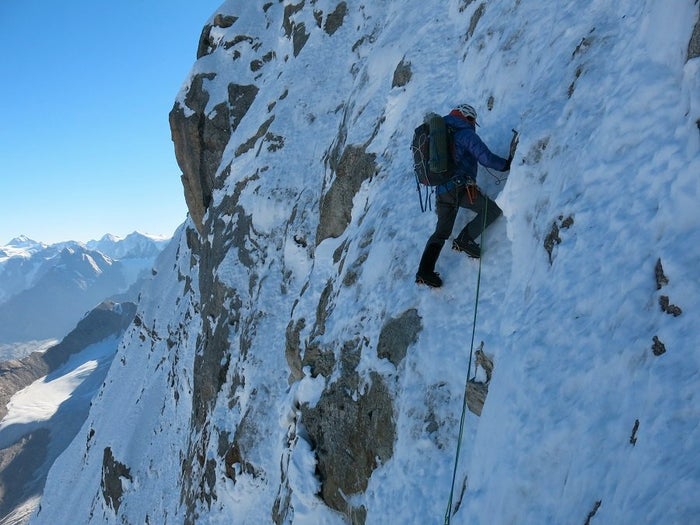
A fantastic day ended with us at a little snow crest where we were able to cut two small ledges, one above the other. Victor was still not feeling well.
‘I think perhaps it is the dehydrated food’ he announced leaving most of his portion.
This was unfortunate as, aside from boiled sweets, we didn’t have anything else. It also struck me that Victor had told me that his usual weight is 59Kg (compared to my 70Kg) and our pre climb blubber comparison had suggested that I had more reserves. As I boosted my calorific intake by polishing off his food I couldn’t help but comment that even Victor wouldn’t be able to run on empty forever. The man himself though appeared not to be concerned.
‘Not a problem. Perhaps it’s just the evening meals and the porridge for breakfast will stay down.’
Whatever the situation it was becoming increasingly clear that finishing the climb and descending the far side would be considerably easier than retreating down the face and re-crossing the Sersank La.
The porridge only partially stayed down and day 5 on the face proved both challenging and memorably fine. By the time we had solved the difficulties of the headwall and had the cornice in sight the Saunders body was surging forward. Where he found the energy from I do not know. Not once did he complain about a situation that would have ended the climb for lesser beings. At the age of 66 he is a truly remarkable man.
The cornice provided an acrobatic finale before, at 18.30 on our fifth day, we flopped out to a new panorama and the relatively amenable slopes of the south west side of the mountain.
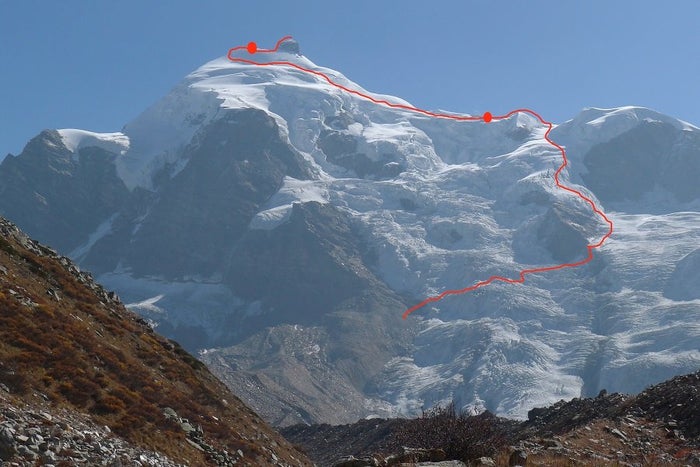
Hopes of being able to pitch the tent were quashed by hard ice just 20cm down but a clear and cold night on nose to tail ledges saw us through to a perfect dawn and a lazy start. Unknown to us Sanju and Devraj had their binoculars trained on us and wondered why we were starting so late. In fact though there was no need to rush; ahead was just the 150m summit pyramid and what we hoped would be a leisurely descent.
The summit pyramid itself had not been climbed. In 2008 a team of Japanese climbers and high altitude porters had reached it’s foot via the glacier systems to the south west but they did not proceed further as local people had apparently asked them to leave the summit untouched. Knowing this beforehand we had quizzed locals at Sural Batori who assured us that they had no objection to us climbing to the highest point.
From the side we approached the pyramid it was not particularly difficult and by 12.30 on our seventh day out from base camp we stood on the top and built a little cairn to mark our passing. The panorama of the Kishtwar, Pangi valley and Lahaul peaks was inspirational. Every time I stand on a summit in this area I seem to see exciting new objectives. It was a first for Victor in this area and he was like a playful puppy faced with an array of new chews.
It was left just to descend the glacier systems of the south west side. Martin Moran had suggested the descent might prove easy. Let’s just say on that front he was wrong. After a day and a half of complex glacier travel, including several forced abseils through icefalls, we eventually escaped onto rocky ground and descended to a welcome tea meeting with Sanju and Devraj.
Three days later our porters had ferried our kit down to Sural Batori and we were ensconced in a local house watching satellite television. It seemed somehow fitting that Bear Grylls was on eating a variety of insects and drinking his own urine.
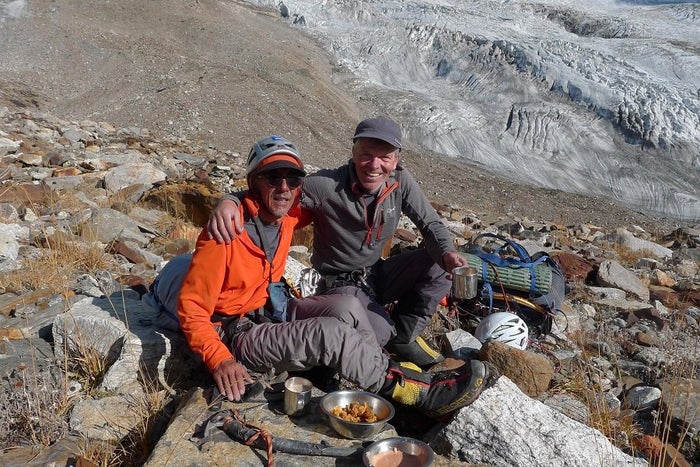
‘Appears to be more refreshing than mine’ concluded Victor as Bear licked his lips enthusiastically.
All we have to do now is agree a follow up re-union climb. There’s a lot to be said for them.
